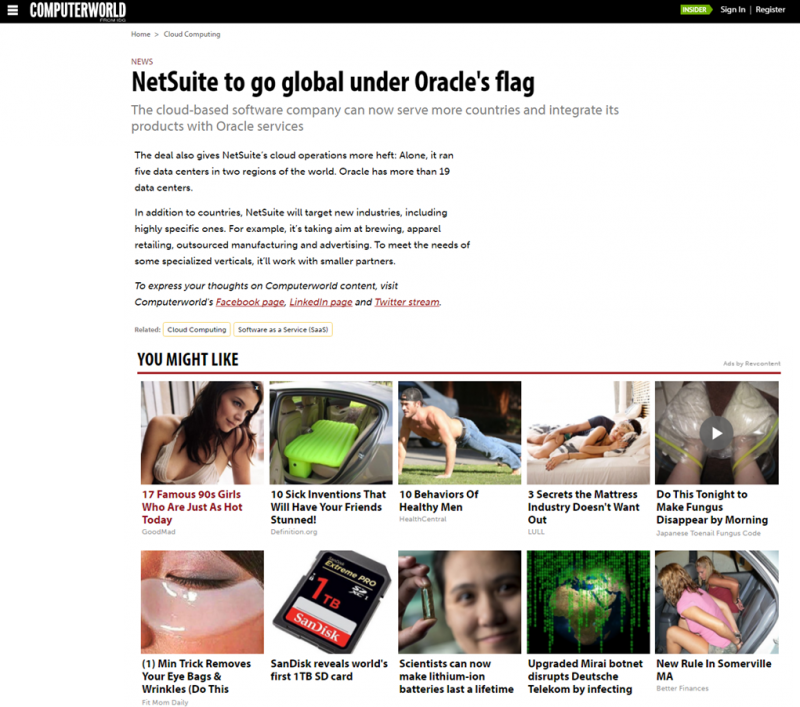Just How “Native” is Your Native Advertising? Branded Content Marketing vs. Branded Content Marketing vs. Branded Content is a form of native advertising that is a great way to leverage authority and reach your audience in the location and format they choose to perform their research. Example: Content Discovery Platform recommendations not aligned with article content Advertisers can either pay for placement (reach) in these content recommendations or approach on a pay-per-click model. And without any kind of targeting or the ability to integrate with very specific tech subjects, B2B marketers are paying for impressions that don’t bring their business any value. It also matches how buyers want to perform their research. However, simply blending with the overall tone and appearance of the publisher site isn’t enough. The challenge with native advertising is always going to be ensuring that your ad content is topically relevant, educational and aligned with the audience needs. How TechTarget Can Help You Drive More Effective Native Advertising Results Our approach organically integrates branded content within independent content to deliver an immersive learning experience, accelerating the efficiency of the user’s research and education process.

According to the Association of National Advertisers (ANA), 96% of marketers say it is important for ads to be contextually relevant to the surrounding editorial content. Native advertising fully embraces this by integrating sponsored content directly within the content environment it is running. At best, native content seamlessly matches the form and function of the site it is running on, providing users with additional relevant options to continue their research. At worst, it departs from and/or degrades the editorial environment in which it appears.
For some, native is seen as a way to disguise advertising so that it appears as if it is content from the website or platform it is being promoted on. For others, it is a genuinely new approach to marketing that truly integrates within content and seeks to provide the same level of value as the domain it is being published on.
Branded Content Marketing vs. Content Discovery Platforms (CDPs)
Currently there are two prevailing methods for native advertising: Branded Content Marketing and Content Discovery Platforms. Branded Content is a form of native advertising that is a great way to leverage authority and reach your audience in the location and format they choose to perform their research. Content Discovery Platforms represent a way to get your ad messaging out cheaply, “integrating” your content across a large volume of sites.
Below, we review both approaches to help you make the right decision when it comes to driving better results from native advertising.
Content Discovery Platforms
Content discovery platforms are the “around the web” ads that are syndicated in either rows of links or boxes of ads that appear under articles on many news and general information sites powered primarily by Taboola and Outbrain, among others. These sites use an implemented software recommendation platform which attempts to match the advertisers “recommended” content with the sites own content. This recommended content is not always identified as marketing content. The priority here is to drive as much traffic as possible at a low cost, rather than provide a relevant, customized experience for the user, raising a debate as to just how “native” they are.

Advertisers can either pay for placement (reach) in these content recommendations or approach on a pay-per-click model. While this strategy offers a cheap way to get your ad messaging out in quantity, it presents many challenges and shortcomings (see example):
- Non-contextual Alignment:…
COMMENTS